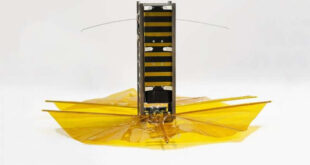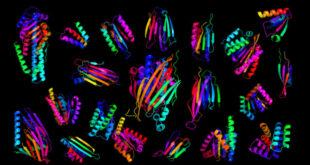
There are many hurdles a potentially useful antibiotic compound has to clear before it’s used in humans. Many substances can kill bacteria, but they come with unacceptable side effects. Others simply lose their effectiveness in the human body or are difficult to deliver where they are needed. Researchers from the University of California San Diego have developed a “micromotor” capable of transporting antibiotics to the site of infection, making them more effective and reducing side effects.
The micromotor isn’t anything mechanical. It’s a tiny construct composed of magnesium, titanium dioxide, and a polymer derived from crustacean shells called chitosan. They look like spheres and are functionally inert until they hit the stomach. That’s when the motors flip on thanks to the high acidity of the environment. That’s actually what makes so many antibiotics difficult to administer in humans–they don’t retain the same activity after passing through the stomach. The micromotors not only protect the drug, but propel it through the body.
In the center of each micromotor is a globule of magnesium, and surrounding that is a protective layer of titanium dioxide. The drug is added on top of that, and finally, the chitosan shell is used to encapsulate the whole thing. The magnesium core is what powers the motor by producing a stream of hydrogen bubbles. That process starts as soon as the pH level starts to drop due to the presence of stomach acid.
The team tested the micromotor concept on Helicobacter pylori, a bacteria that can cause ulcers in the human stomach. In this case, mice were used as a stand-in. That discovery earned Barry Marshall and Robin Warren the 2005 Nobel Prize in medicine. To treat an infection of Helicobacter pylori, doctors usually prescribe an antibiotic and a second drug to lower stomach acidity. The problem: Those drugs come with a list of nasty side effects.
The micromotors don’t require that second drug at all–it’s a single-step treatment. Not only can the antibiotic be delivered to the site of infection by the motor, but the decomposing magnesium naturally lowers acidity (those hydrogen bubbles that are released) without all the side effects of medications. The team reported that micromotors were the same or better at fighting Helicobacter pylori infections compared to traditional treatments, and that stomach acidity returned to normal in just a day.
It’s possible micromotors could be used in humans to treat stomach ailments with new drugs that would otherwise be ineffective. That could be a significant advantage as antibiotic resistance becomes a larger problem.
Now read: What is the ‘antibiotic apocalypse,’ and can it be avoided?
 #Bizwhiznetwork.com Innovation ΛI |Technology News
#Bizwhiznetwork.com Innovation ΛI |Technology News



